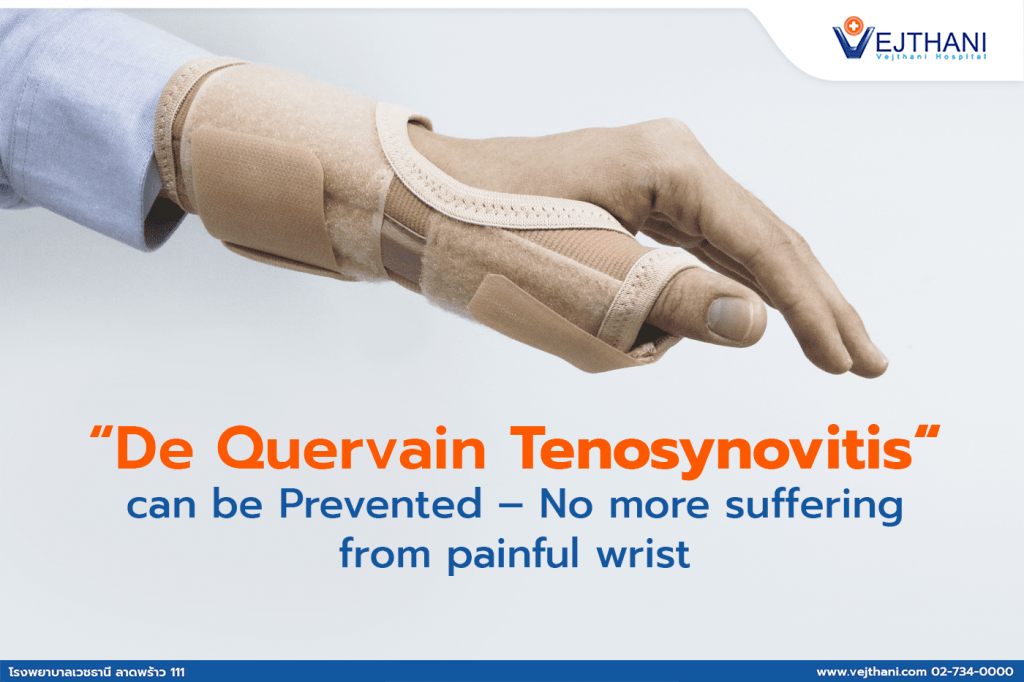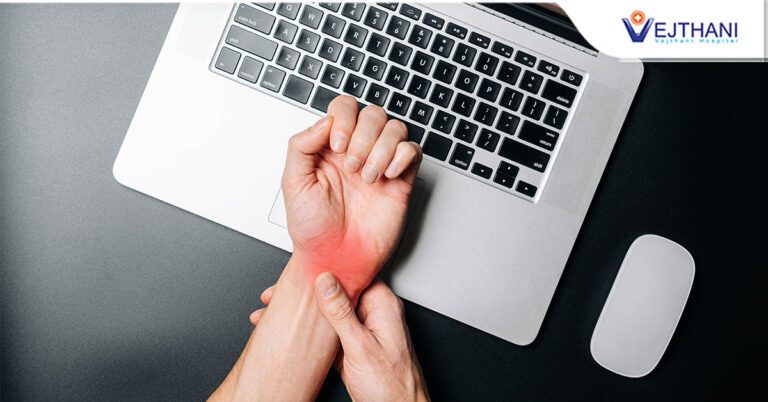

De Quervain tenosynovitis or inflammation of the tendons of the wrist, has become one of the most common diseases these days. The condition is caused by inflammation of the tendons on the thumb side of the wrist, which are responsible for stretching and extending the thumb.
De Quervain tenosynovitis is more common in women than men and can be caused by many factors. It could be from accidents or falls which may twist the wrist, prolonged and repetitive use of the hands in the same position, such as continuously using a smartphone or a tablet, or as seen in office workers who are required to be in front of the computer for a long time, as well as housekeepers who are engaged with continuous house chores. These activities could lead to a painful wrist.
Patients with De Quervain tenosynovitis suffer from pain when moving their thumb or wrist. The pain tends to come and go. When the inflammation is severe, there will be redness and swelling.
The symptoms will get worse when the wrist is being used continuously without rest. Some patients may have radiating pain from the wrist to the elbow, along with numbness and burning sensation as a result of inflamed nerve roots.
If the wrist starts to ache, check the primary symptoms by making a fist and bending the pinky-finger side of the wrist. If the condition is present, pain in the will be felt. However, if the symptoms are severe, trying to extend the thumb alone may be enough to cause severe pain.
The best prevention of De Quervain tenosynovitis is to avoid movement that cause pain in the wrist, as well as to rest the wrist from time to time, in combination with wrist exercising by moving, stretching and extending the thumb.
In case of acute wrist pain, in the first 2-3 days, use a cold compress to reduce swelling and inflammation.
However, if the disease persists and has become chronic, use a warm compression or soak the wrist in warm water for 10-15 minutes in the morning. This will help loosen the tendons or tendon sheaths so the wrist could function better throughout the day.
When the symptoms of De Quervain tenosynovitis arise, it is recommended to seek immediate medical treatment from a doctor. Leaving the disease untreated until it becomes chronic, may require surgical treatment to release the tight tendon sheath that compresses the tendon and causes inflammation. This will allow the tendon to move more freely and the wrist to be used without pain. The most important thing is to avoid repeating the same gestures and adjust the lifestyle so it prevents the condition from coming back.
For more information, please contact
Orthopedics Center, 2nd Floor, King of Bones Building, Vejthani Hospital
Call +66 (0) 2734-0000 ext. 2298,2299
+66(0)85-223-8888 (English Hotline)
- Readers Rating
- Rated 5 stars
5 / 5 ( Reviewers) - Spectacular
- Your Rating



























